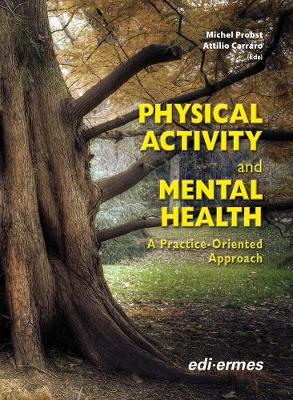CONTENT
SECTION 1. THE RATIONALE FOR PHYSICAL ACTIVITY AND MENTAL HEALTH
1. Introduction: why physical activity and mental health
1.1. A brief history
1.2. The organization of this book
2. Epidemiology and diagnostic criteria of psychiatric disorders
2.1. Schizophrenia and other psychotic disorders
2.2. Mood disorders
2.3. Anxiety disorders
2.4. Eating disorders
3. Physical activity and mental health, psychological and physiological mechanisms
3.1. Mental health and physical activity
3.2. Psychological and physiological mechanisms
3.3. Physical activity: handle with care
3.4. Summary: clinical implications of physical activity and indication for exercise setting
4. Psychopharmacological drugs and physical activity
4.1. Introduction
4.2. Adverse drug reactions
4.3. Main adverse reactions due to psychotropic drugs
4.4. Medication-induced movement disorders
4.5. Medications and weight gain
4.6. Endocrine system and psychotropic agents
4.7. Conclusions
SECTION 2. PHYSICAL ACTIVITY AND EXERCISE IN THE APPROACH OF MENTAL HEALTH PROBLEMS
5. The role of exercise in the generation and regulation of stress
5.1. Introduction
5.2. How does stress affect health?
5.3. Exercise and the perception of stress
5.4. Summary and practical recommendations
6. The role of exercise in alcohol dependence recovery
6.1. What alcohol is
6.2. Maladaptive pattern of alcohol use
6.3. The dimensions of the problem
6.4. Alcohol consumption and sport participation
6.5. The effects of alcohol on physical performance
6.6. Exercise interventions in alcohol dependence treatment
6.7. Potential mechanisms of action
6.8. Suggestions to organize a group-based exercise program in a clinical setting
6.9. Conclusion
7. Physical activity in the treatment of people with schizophrenia
7.1. Characteristics of schizophrenia
7.2. Rationale for physical activity in schizophrenia
7.3. Practical implications for physical activity interventions is schizophrenia
7.4. Summary and guidelines for physical activity interventions in schizophrenia
8. Life in movement: a physical activity program involving schizophrenic participants in community settings
8.1. Introduction
8.2. Schizophrenia and physical activity: the life in movement program experience
8.3. The rationale
8.4. LMP – the pedagogical platform
8.5. The life in movement interventions platform
8.6. Assessment and evaluation experiences
9. Exercise for depression and anxiety: an evidence based approach and recommendations for clinical practice
9.1. Depression
9.2. Anxiety
9.3. Potential mechanisms of action
9.4. Depression, anxiety disorders, and physical health
9.5. Depression, anxiety disorders, and cognitive functioning
9.6. Evidence based recommendations for clinical practice
9.7. Strategies for improving motivation and adherence to exercise
10. Eating disorders and physical activity: a complex relationship
10.1. Physical activity in patients with eating disorders
10.2. A conceptual proposal
10.3. A Flemish clinical concept for physical activity as an inpatient treatment approach
11. Eating disorders in athletes
11.1. Eating disorders specific to athletes
11.2. Prevalence and aetiology
11.3. Physical activity/sport: a social risk factor
11.4. Prevention and treatment of ED in athletes
12. Obesity and exercise in psychiatric patients
12.1. What overweight and obesity are
12.2. The aetiology of overweight and obesity
12.3. Consequences of overweight and obesity
12.4. The treatment of obesity
12.5. The realization of physical activity on obesity
12.6. Conclusions
13. The role of physical activity in the treatment of attention deficit hyperactivity disorder
13.1. Introduction
13.2. Physical activity and ADHD: theoretical overview
13.3. Treatments
13.4. Suggestions for physical activity intervention
13.5. Summary
14. Sport and adolescents with severe conduct disorders
14.1. Introduction
14.2. Sport and severe conduct disorders: theoretical overview
14.3. Recommendations
15. Physical activity and people with intellectual disability (mental retardation)
15.1. Intellectual disability
15.2. Rationale for physical activity in intellectual disability
15.3. Practical implications for PA-interventions in people with intellectual disability
16. Physical activity – psychomotor therapy and elderly with psychiatric disorders
16.1. Brief description of the characteristics of the disorder
16.2. Theoretical scientific view why PA may be important for this disorder
16.3. Translating theory into practical applications
16.4. Summary and guidelines
SECTION 3. INSTRUMENTS
17. Assessment and evaluation instruments of physical activity to use in people with mental health problems
18. Sport activities in leisure time for people with psychiatric disorders
18.1. Introduction
18.2. Background: sport and disability
18.3. Sport Federations in Europe for people with a mental disability
18.4. International sport organizations for people with a disability
References
Subjects index

